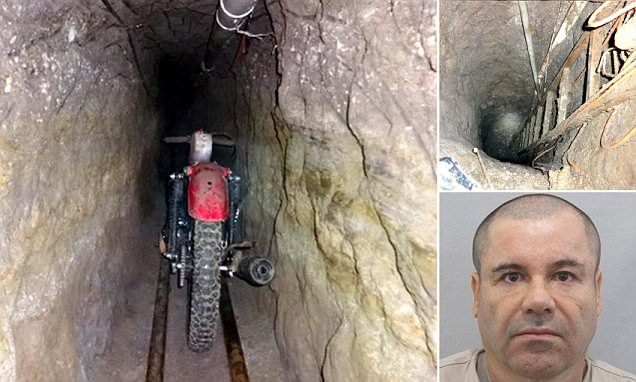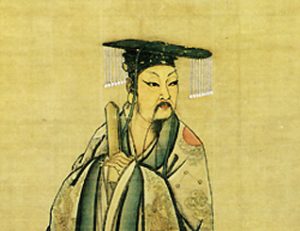Have you ever imagined being a billionaire? How about being a fugitive? Well, El Chapo was both a billionaire and a fugitive. Joaquin “El Chapo” Guzman became the leader of the Sinaloa cartel in the late 1980s. He was first captured on June 9, 1993, and was transported to Almoloya maximum security prison in Mexico. El Chapo constantly asked to be relocated, and in November of 1995, he was sent to the Puente Grande prison near Guadalajara. On January 19, 2001, El Chapo escaped by hiding in a dirty-laundry cart which guards led to the gate, and then he proceeded to walk out the building dressed as a policeman. The escape was like something you would see in a movie. Shortly after his escape, El Chapo resumed his leadership in the Sinaloa Cartel, which is one of the most powerful and violent drug trafficking syndicates in the world. The Sinaloa Cartel primarily smuggles and distributes Columbian cocaine, Mexican marijuana, methamphetamine, and Mexican and Southeast Asian heroin into the United States.1

On February 22, 2014, El Chapo, asleep next to his wife and 2-year-old twin daughters, was captured at a hotel in Mazatlan, Sinaloa. He had no time to escape nor grab his weapons. Once he was captured, the United States wanted El Chapo to be handed across the border for drug trafficking charges in U.S. federal court. However, Mexico insisted that they would detain El Chapo, and keep him so secure that he would not see the world in hundreds of years.2 He returned to prison after making a legendary escape 13 years ago through a tunnel he had fabricated. The prison he was placed in went to great lengths to ensure its security — by checking if the walls were hollowed, having a set shower time, and forcing inmates to have their heads shaved every seven to twelve days. Mexico officials felt that El Chapo should do his time in Mexico before being extradited to the United States.3

On Saturday, July 11, 2015, word spread that El Chapo had escaped Altiplano Prison again. The next morning Mexican officials confirmed this news. Surprisingly, he had escaped through a 1.5-kilometre tunnel from a small opening in the shower area of his cell.4 Altiplano has a multitude of ground-level security measures such as the prison being covered in CCTV cameras and access control points.5 El Chapo was located in the special treatments area, hallway two, cell 20. The video footage Osorio Chong released from inside El Chapo’s prison cell showed Guzman entering the shower then disappearing at 8:52 p.m.6
One inmate, Flavio Sosa, was in the same unit seven years prior at the prison from which El Chapo escaped. He claims that this prison is not one you can easily escape from, because there are only 20 inmates in the special treatment area and a camera is watching you at all times in your cell. On top of that, there is a special visit program to intimidate inmates and inspect every cell thoroughly. In his words, “They strip you naked and once you are naked you have to do three squats, show them your testicles… Then, they enter your cell with dogs to examine it, with a tool that they use to knock on the wall on the floor… You have a shower time at 5:45 in the morning. Nobody can turn on the shower during the day or night.” This escape really exposed the weaknesses in the Mexican justice and prison system.7

This isn’t the first time El Chapo has used tunnels to traffic or escape authorities. The tunnel he used to escape Altiplano prison also gave people a glimpse of the tunnels the Sinaloa Cartel likely use to traffic drugs across borders without being detected. Many people blame the Mexican government for the escape of El Chapo, causing them to lose trust in their government. El Chapo’s escape was demoralizing — through it, Mexican citizens lost the trust of the government’s abilities to protect their citizens as well as the trust between both borders. 8
- Romero L. Gomez, “El Chapo’ jailbreak is both a Mexican and an American story,” The Conversation (1-4), July 17, 2015. ↵
- E. Eduardo Castillo and Katherine Corcoran, “Cartel boss escapes Mexican prison; Joaquin ‘El Chapo’ Guzman used elaborate, 1.5-km tunnel in second break from jail,” The Toronto Star, 2015. ↵
- Rafael Castillo, “Inside El Chapo’s Escape Tunnel,” Vice News, Jul 24, 2015, video. ↵
- E. Eduardo Castillo and Katherine Corcoran, “Cartel boss escapes Mexican prison; Joaquin ‘El Chapo’ Guzman used elaborate, 1.5-km tunnel in second break from jail,” The Toronto Star, 2015. ↵
- Helen Regan, “Newly-Released Footage Shows Joaquin ‘El Chapo’ Guzman Moments Before His Escape,” Time, 2015. ↵
- Rafael Castillo, “Inside El Chapo’s Escape Tunnel,” Vice News, Jul 24, 2015, video. ↵
- Rafael Castillo, “Inside El Chapo’s Escape Tunnel,” Vice News, Jul 24, 2015, video. ↵
- Alfredo Corchado, “Mexican drug lord Joaquin ‘El Chapo’ Guzman tunnels out of prison,” Dallas Morning News, July 13, 2015. ↵



147 comments
Hailey Rodriguez
I had heard of El Chapo’s many escapes from prison throughout the years, however, I had never known how he managed to escape so many times right under the government and guards noses. It is crazy that he went to such extremes to continue selling drugs and be reunited with his family. It is pretty sad that he was detained while with his wife and his kids, however, he was the one doing illegal things.
Hailey Stewart
El Chapo’s story seems almost fiction-like. I recall listening to a National Public Radio report on his second escape. This article does a good job of briefly describing the political impacts that El Chapo’s escape had on the Mexican citizens and their distrust of their government. This story has many layers to it, which is hard to fit into one article, however, the article was very focused and well written.
Miguel Rivera
Oh well that defeats the purpose of having him “not see the world in hundreds of years” when he escapes a year and a half after his capture. He is a very influential person in Mexico and even had his interview with Sean Penn, which was very controversial. He is now in prison here in the United States so it will be an interesting trial in November.
Jose Fernandez
I think this story is very important because it shows the magnitude of the power “El Chapo” had. I personally think it reflects poorly on the Mexican government because he managed to escape twice from a supposedly maximum-security prison. I really enjoyed reading the article, it has important facts and I can tell a lot of research was done before it was written. I also liked the pictures.
Daniela Martinez
The fact that El Chapo was able to escape prison twice shows how weak the Mexican penitentiary system is. Which comes to no surprise seeing how most of the Mexican population voices their constant distrust with the Mexican government. Especially in circumstances involving drug cartels which have caused continuous harm to various regions in Mexico. The fact that El Chapo was able to still have influence and power even while in jail, shows how truly powerful he was in within the Mexican cartels and government. Which further establishes the fact that Mexico struggles when it comes to law enforcement and lacks the ability to provide its people with a safe environment
Daniel Linstead
El Chapo must be a very important person to his cartel in order to go to so much trouble and risk so much in order to get him out. It makes you wonder in saying that is the system corrupt. The only reason I say that is due to the fact that someone is able to escape a maximum security prison so many times in the space of a few years. Like how is that even possible if these are meant to be our maximum security prisons.
Cooper Dubrule
Stories about cartels are always interesting and I think that this article does a really good job at illustrating how powerful El Chapo truly was. In order to escape a maximum security prison the way he did requires a lot of power and influence. He had to have connections to people who ran the prison in order to be successful. The way the article uses actual inmates personal accounts makes it really credible and informational.
Kathyleen Lauriano
Having a lot of family from Mexico, I have always heard the stories of El Chapo. The fact that he was able to escape from a maximum security prison really shows how powerful and clever he is. Who else would build a tunnel. The government has much to blame and Mexico’s citizens sure are losing trust and faith in the government to keep them safe.
Karina Cardona Ruiz
I had heard of El Chapo and his escape but I was not aware of the specifics before I read your article. It both amazes me and terrifies me that he was able to escape not only once but twice from prison. This situation really makes you think about how secure prisons actually are and how monitored they are. Hopefully they’re able to learn from their mistakes and make changes accordingly to ensure that no one else can escape again.
Marina Castro
I remember watching in the news that El Chapo Guzman had escaped from prison. Everyone was so amazed by knowing how in the world he had escaped a maximum security prison. This story almost seems like fiction because of how unlikely it is to happen. The fact that he was able to escape proves how much power he has and how big his cartel is.